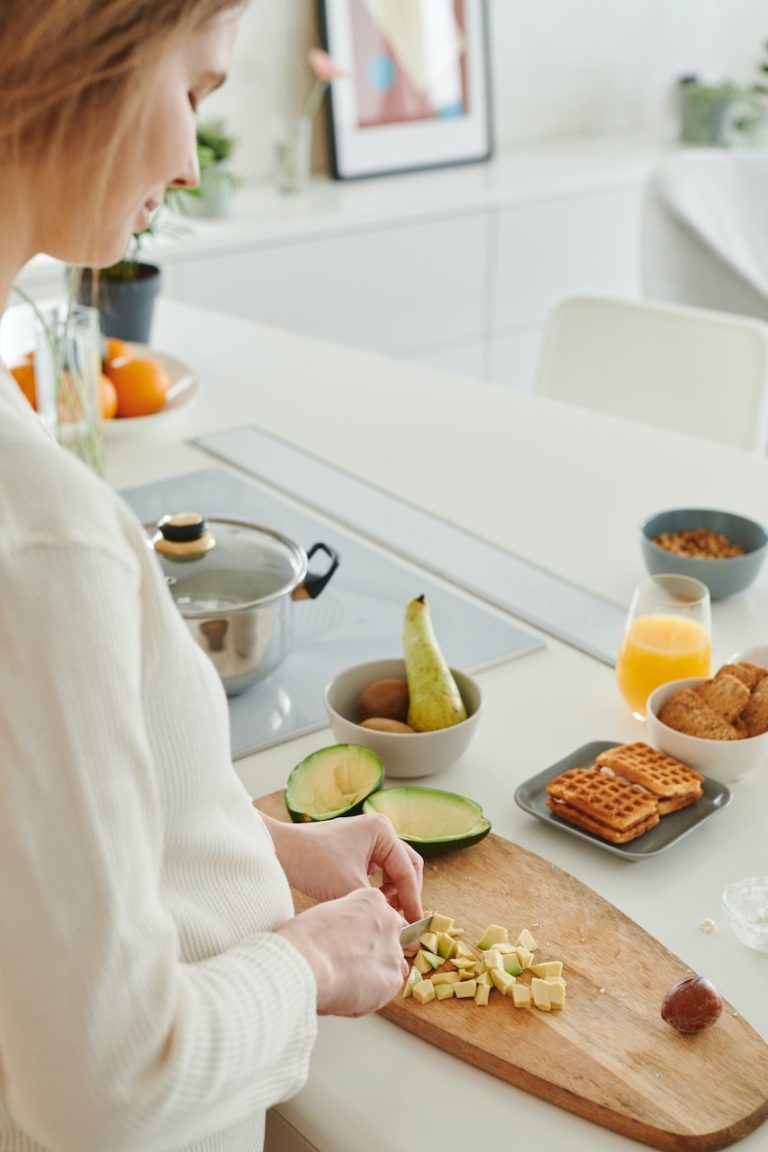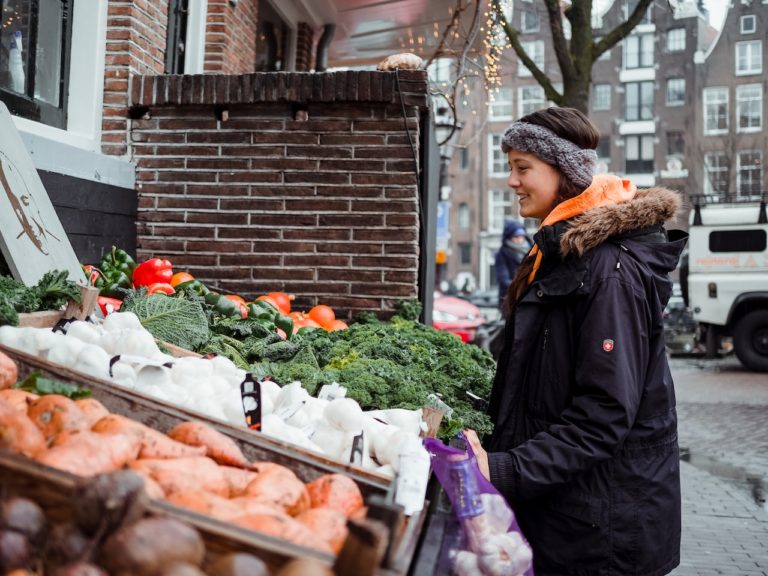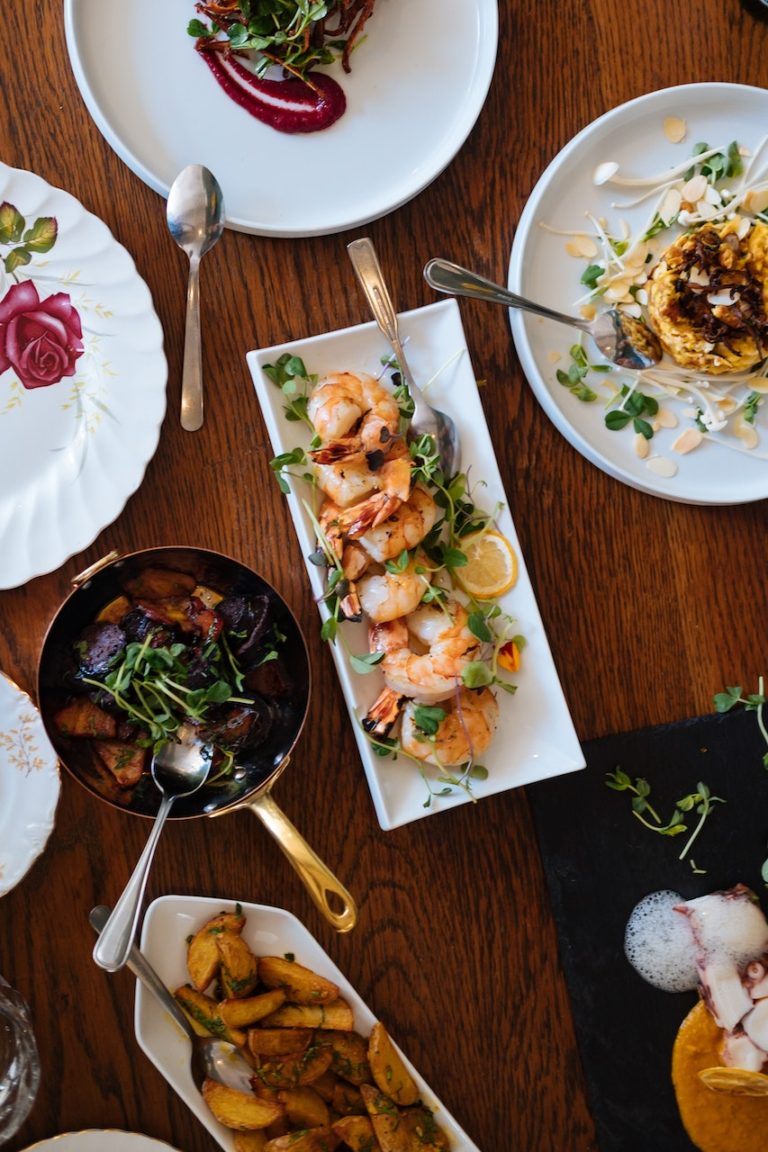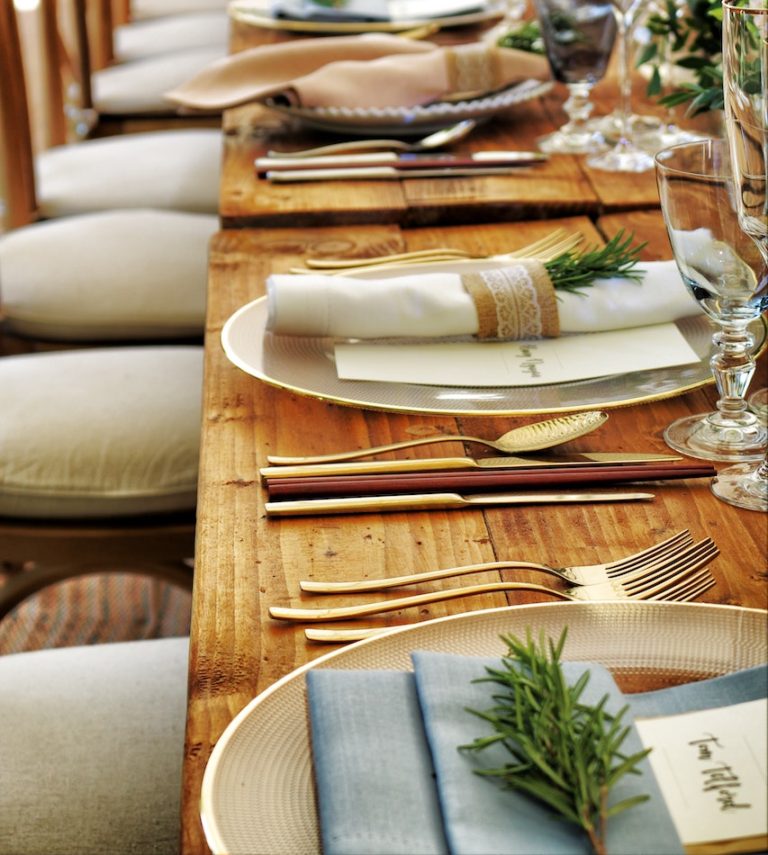With Thanksgiving dinner, Christmas feasts, and other holiday meals coming soon, your tummy isn’t going to be the only thing that’s getting filled. Unfortunately, our landfills see a ton of our leftovers and even more of our waste too. Here are 9 ways that you can reduce the amount of holiday waste you, your family, and your friends produce this season.
I’ve split this list into two sections. The first section covers things you can do before your family and friends come knocking on your front door. The second section has ideas for when you’re enjoying their company.
The Temptation of Convenience
Before you move on to the list, I just want to point out one major theme here. All of these ideas might seem easy on paper. But when it comes to fighting plastic or shopping locally rather than big chains, what we’re not actually fighting is the plastic itself. Usually, we’re fighting convenience.
I know it’s way more convenient to buy the pre-chopped onions or sliced fruit platter. It’s in those moments, where it’s easier to “save time,” that you have to remind yourself that convenience comes at a cost and the long term price is way too much to pay. Our kids shouldn’t be swimming in the ocean 20 years from now with today’s Thanksgiving plastic ware.
Now that I’ve said what I needed to say, on with the list!
Before the Big Day

1. Homemade Meals
The first thing you can do to help reduce holiday waste is to just make your food at home. Buying premade products at the grocery store automatically comes with disposable packaging. Behind that disposable packaging is even more packaging that you can only begin to guess about. That cake had to come from somewhere. And where it came from was a place with even more plastic containers and boxes that didn’t get recycled or composted.
If you compost or recycle, then you know for sure that the materials you’ve used to cook are getting sustainably disposed of. Like that can of pumpkin pie mix for instance, you know it’s getting recycled. Whereas the grocer likely threw it away. Or maybe that unused celery gets composted at your house instead of thrown in your grocers dumpster.

2. Refuse Plastic
The kind of plastic I’m talking about here is the kind that smothers your produce. Don’t go for the plastic wrapped green pepper. Grab the unwrapped one and stick it in your reusable produce bag.
France had the right idea here, they recently banned plastic wrap for produce. There’s just no point. Produce came with wrapping already, nature provided it. Chopping, dicing, and slicing your fruits and veggies at home is a simple way to reduce on single-use packaging.
3. Make Your Own Beverages
This one can be really fun. It’s so easy to just grab two 2-liters on the soda aisle and call it a day. But what if, instead X guest were in charge of dessert, Y guest in charge of sides, and Z guest in charge of homemade beverages?
Then it’s just another thing everyone gets to try that was made specially by someone at your dinner table. Even if it’s as simple as sweet tea, or as complex as some crafty cocktail, there’s something more to handmade beverages than anything you could get on the plastic aisle.
The key here is that you then want to avoid plastic in the ingredients. You can do it if you set your mind to it. Cocktails can be made without plastic bottled mixers. Even lemonade and soda can be swapped for lemonade packets and soda cans over their plastic alternatives.

4. Shop Locally
Grocery shopping doesn’t have to be a dull overpopulated grocery run underneath fluorescent lighting. Farmers markets can be a great solo or family activity. Farmers markets can happen near you, even throughout the fall and winter. They’re especially ripe this time of year with fresh apples and squash, pumpkins, and potatoes. You might even find hayrides and mazes at some too.
What’s so great about these is that they already come without the plastic, you’re supporting local businesses, and cutting down on packaging and shipping costs that normally come with items at big grocers. What’s not to love about that?
5. Use Your Own Pan
Another convenience item, but hear me out. If you just use the pots and pans you have at home rather than those thin, flimsy, disposable aluminum pans at the store we’ll all be better off. We all know where metal comes from, it has to be mined. Constantly using and tossing resources like metal takes a lot out of our lovely planet.
I recommend using glass cookware. A great Pyrex or Anchor pan, pie container, or bowl can last forever. Literally. And you can easily throw it in the dishwasher when you get back home. Even better is that almost every kind of glass cookware you could want can be found at a thrift store.
The Day Of

6. Avoid Plastic Utensils
As long as your gathering isn’t a super big one, then this alternative is pretty feasible. I’m assuming you have silverware already and can use that instead of opting for disposable plastic utensils.
Disposable plasticware might be more convenient but it’s extremely wasteful. If you take the plastic route, even if it’s “post-consumer recycled,” then within a few hours you’ve added 5 to 20 sets of plastic to the landfill that will be in the earth, good as new, when your grandchildren have grandchildren.
If you don’t have enough silverware to go around, then go for utensils that are backyard compostable. That way you can compost them when you’re finished and they’ll go on to fertilize veggies for Easter supper. Plus, if you compost or recycle, then you know for sure that the materials you’ve used to cook are getting sustainably disposed of.
7. Skip the Solo
Single-use plastic cups are another convenience item that we just don’t need. There are people out there that reuse and reuse these, I know because I personally know several. But even you plastic-reusers will be better off without disposable plastic cups.
Best case scenario is that you use what you have in your home already. That might mean mismatched cups at the dinner table but I promise it’s okay. Still, if that’s not doable, I understand.
One easy thing you could do is request that everyone bring their own mug or cup. I almost always have my own cup with me anyways and I tend to use that at gatherings. Most everyone will have something they can use, and what’s even better is there won’t be any mixing up of cups because you’ll have less identical cups floating around.
If you don’t like that idea either, then you could also just invest in a large set of reusable cups. This really should be a last resort. You can find tons of cups at thrift stores. Or worst case scenario, you can find affordable and reusable options at stores like Walmart and Dollar General. If you want something a little more upscale, then Klean Kanteen does have 4 packs of pin sized stainless cups great for family gatherings. In order for these to have less impact than single use cups you’ll want to keep them for a very long time and get a ton of uses out of them.

8. Use Cloth
I’m talking about napkins here. Cloth napkins are a sustainable swap I recommend no matter the season. If it’s a swap you’ve already implemented, then you might have enough to get you through the holiday feast anyways. If not, then you can easily pick up a few more cloth napkins to add to your set. This is a great way to cut back on paper usage and it’s super easy.
I use a set of washcloths. They’re only used as napkins in my home and I keep them on my kitchen counter in a (small) pyramid of rolls. You can store them however you want, in a basket, in the drawer, the options are endless. If you opt for “official” cloth napkins then more power to you, your guest will really think your fancy!
9. Choose Great Leftover Containers
If you’ve ditched the single-use and flimsy tin pans then you’re already ahead of the game. A lot of quality glass cookware is also great for storage. My brownie pan from Anchor has its own lid and I just put that over top and store in the fridge when I’ve made things like pudding and casserole. When it’s empty, you just throw it in the dishwasher and then it’s ready for reuse.
I also love using my snapware containers for leftovers. I have a full review on Snapware glass containers that you can check out here. But, as a college student, Snapware was EXTRA handy because I would store uncooked food in them, freeze them, and then bake them in that same container when I was ready for a nice home cooked meal.